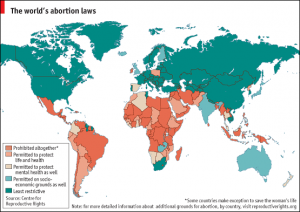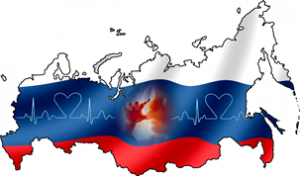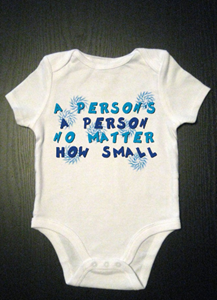We’ve all heard the mantra ‘safe, legal and rare’ from abortion advocates. In this article, we look into the medical research on side effects, complications and injuries that can happen from each type of abortion. Here you will learn the facts and statistics about the risks of abortion procedures. This often overlooked topic is very important to women’s health.
How often do complications occur from abortions?
The short answer to this question is that we really do not know how often complications occur after abortions. Dr Lenora Berning, a physician from North Carolina, sums up the situation this way: “(Complications of U.S. abortions) are under-reported because there is no accurate process in place today to quantify the harmful repercussions of abortion. The abortion industry has successfully kept abortion and abortionists free from the type of review, regulation, and accountability that is an integral part of the rest of the medical profession”. [1]
A 2017 study from Sweden found that from 2008 to 2015, first trimester abortion complication rates actually doubled, from 4.2% in 2008 to 8.2% in 2015. [2] According to the study authors, “The cause of this (doubling) is unknown but it may be associated with a shift from hospital to home medical abortions.” Home medical abortions refer to abortion by pill or medication abortions, and have been on the rise in the United States especially in the last 10 years. Between 2001 and 2014, medication abortions went from 6% to 31% of all non-hospital abortions, and represented almost half of abortions before 9 weeks gestation. [3]
Where do maternal mortality rates and abortion mortality rates come from?
According to the Central Intelligence Agency (CIA), the maternal mortality rate is: “the annual number of female deaths per 100,000 live births from any cause related to or aggravated by pregnancy or its management (excluding accidental or incidental causes).” [4] Abortion mortality rate is a general, not a technical, term for the annual number of maternal deaths due to abortion-related complications, whether during or directly after the procedure, or in the weeks and months following. Different studies quantify the abortion mortality rate differently. Many times, death certificates are assumed to be the definitive source for determining abortion mortality rates. However, research has shown that death certificates identified a current or recent pregnancy only about 50% of the time. [5]
Maternal mortality rates numbers come from the Centers for Disease Control and Prevention’s (CDC) Pregnancy Mortality Surveillance System. Abortion mortality rates numbers come from the CDC’s Abortion Mortality Surveillance System. [6]
What’s wrong with the national reporting system for abortion statistics?
First, the number of abortions done in the United States each year is an estimate, not an actual, accurate number. This is because only two national organizations collect abortion data, and reporting to both is voluntary. These two national organizations are the Centers for Disease Control and Prevention (CDC), a federal government agency, and the Alan Guttmacher Institute, formerly the research arm of Planned Parenthood. States are not mandated to provide their numbers to either organization, though the Alan Guttmacher Institute’s statistics are considered the most accurate.
The CDC’s most recent abortion statistics report, based on data from 2014, can hardly be called representative of the total number of abortions done in that year. One of the reasons this number cannot be accurate is because California has not provided their numbers to the Centers for Disease Control for over 15 years. The CDC report also excluded numbers from Maryland and New Hampshire.
The Alan Guttmacher Institute estimated that about 157,350 abortions were performed in California in 2014, about 17% of all abortions nationally. [6] They estimated around 2,540 abortions that same year in New Hampshire, and around 28,140 in Maryland for a total of 3.3% of the national total. So, these three states not reporting their data to the CDC represents under-reporting of abortion rates by at least 21%.
Guttmacher Institute numbers estimate over 926,000 abortions in 2014, versus the CDC’s reported 652,639.
What’s wrong with the national reporting system for abortion-related complications, injuries, and deaths?
The biggest problem with the national reporting system for abortion-related complications, injuries, and deaths in the United States is that reporting is not mandatory. Only 27 states require abortion providers to report injuries and complications from abortion to the CDC’s Abortion Mortality Surveillance System. [7] In studies from Denmark, Finland, and California that included multiple information sources rather than just death certificates, women who aborted were more likely to die than women who had a live birth. [8][9]
Other problems include deaths due to abortion being reported instead as due to the complication. For example, the World Health Organization’s International Classification of Diseases (ICD) medical coding for a woman who died from an abortion-related infection would be coded as dying from infection, not from the abortion. Also, many women who experience abortion-related complications will go to the emergency room for care, not back to the abortion clinic. Hospital staff may or may not ever find out that the woman had an abortion. Additionally, state death reporting does not usually trace suicide back to reasons like abortion. [10]
The World Health Organization recognizes that determining abortion-related deaths may be difficult because “this requires information about deaths among women of reproductive age, pregnancy status at or near the time of death, and the medical cause of death. All three components can be difficult to measure accurately, particularly in settings where deaths are not comprehensively reported through the vital registration system and where there is no medical certification of cause of death.” [11]
Surgical Abortion Complications:
Surgical abortion complications generally fall into one of three categories. The first category is uterine complications. Uterine complications come from either incomplete removal of some part of the fetus, amniotic sac, placenta, or other tissue, or from uterine atony (failure of the uterus to contract after the abortion) causing hemorrhage (large amount of bleeding). The second category is infection. The third category is injury because of medical instruments used during the abortion. [12]
Uterine Complications:
Incomplete or Failed Abortion
- Retained fetal body parts or tissue, placenta, or amniotic sac can lead to pain and infection of the uterus, and may require hospitalization.
Uterine Atony
- Hematometra is a collection of blood inside the uterus that causes symptoms such as low blood pressure and pain. [13]
- Hemorrhage is an abnormal loss of blood that can become life-threatening, requiring hospitalization, blood transfusions, or even surgery to stop the bleeding. [14]
- Disseminated intravascular coagulopathy (DIC) is a life-threatening blood clotting and bleeding disorder. DIC is also a complication of Amniotic Fluid Embolism (listed below).
Infection
- Incomplete or failed abortion (see above) can lead to life-threatening infection.
- Infection of the uterine lining is typically caused by a combination of normal vaginal bacteria and an active sexually transmitted infection traveling up through the dilated cervix. [15]
- Medication abortion or abortion pill medication (Mifepristone and Misoprostol) has been associated with a very rare but deadly infection by a bacteria called Clostridium Sordelli. All but one woman who have developed this infection have died from it. [16]
Injury
- Uterine perforation, or puncturing a hole in the side of the uterus, may lead to hemorrhage.
- Injury to the uterus can lead to preterm labor or miscarriage in future pregnancies A weakened or damaged cervix may lead to preterm labor or preterm premature rupture of membranes (bag of waters breaking) in future pregnancies. [17] Either one of these conditions can end in miscarriage or in the baby being born before 37 weeks and having brain, lung, heart, and other problems.
- Bladder injury can occur due to perforating the uterus. [18]
- Amniotic fluid embolism occurs when amniotic fluid from the fetal amniotic sac enters the mother’s blood stream and causes vital organs to shut down. [19] Once an AFE occurs, death is almost always inevitable.
- Injury to the bowels or other organs may occur from the curette (sharp, scraping tool used to remove tissue and fetal body parts) breaking through the wall of the uterus. [20] Bowel injury may impact the large intestines or small intestines.
- Asherman syndrome is scarring of the uterine lining or in the cervical canal. Asherman Syndrome can cause infertility, miscarriage, or preterm delivery in future pregnancies.
Some general notes about surgical abortion complications include:
- Non-white women undergoing surgical abortion are more than twice as likely as white women to die from the procedure.
- Obese women undergoing surgical abortions are more likely to have greater blood loss and the abortion takes longer.
Several other complications can occur after an abortion due to changes in the woman’s blood circulation during pregnancy. These include deep venous thrombosis (DVT), which is a blood clot in one of the major veins of the body, often a leg vein. Blood-thinner medication has to be given in order to prevent the clot from causing a stroke or heart attack or pulmonary embolism (blood clot in the lungs). Pulmonary embolism sometimes develops on its own, without breaking off from a DVT. Pulmonary embolism can cause sudden death if it is large enough. [21]
Medication Abortion Complications:
- Pain, may be severe [22]
- Cramping
- Bleeding
- Uterine rupture, or the whole uterus ripping apart, causing life-threatening bleeding and possibly death. This is an emergency. Risk of uterine rupture is generally low in first trimester abortions, but still exists for women with uterine scars already, like from a previous Cesarean section. [23] Women generally deliver at home after taking pills, where there would be no access to specialized medical care if uterine rupture occurred.
- (as mentioned above) Medication abortion or abortion pill medication (Mifepristone and Misoprostol) has been associated with a very rare but deadly infection by a bacteria called Clostridium Sordelli. All but one woman who have developed this infection have died from it. [24]
- In total, 22 women who took the abortion pill have died since 2000. 2 of those women died from ruptured ectopic pregnancies, even though the FDA insert says that no woman with an ectopic pregnancy should take RU-486.
Anesthesia-related Complications:
Finally, general anesthesia may be used in a small percentage of cases. General anesthesia has its own set of side effects. General anesthesia affects the whole body and requires being on a breathing machine. [25] In contrast, local anesthesia, which is much more common during abortions, refers to temporary relief of pain in a specific area. Complications of general anesthesia may include: low blood pressure requiring special intravenous (IV) medications, dizziness or confusion, nausea and vomiting, sore throat from the breathing tube, and, in very rare cases, a life-threatening condition called [26] malignant hyperthermia. [27]
“Conscious” sedation or “IV conscious sedation” is another method of pain relief and relaxation that has some complications. Medicine given through an intravenous (IV) line that takes away pain and relaxes the patient. It may also cause amnesia, or inability to remember the events of the actual abortion procedure. The goal is for the woman to be in a twilight-zone state, able to move arms and legs but relaxed and comfortable. Risks of sedation include getting too much sedation and needing oxygen or extra breathing support and abnormally low blood pressure requiring specialized medication and hospitalization. Every woman is different, and every woman responds to sedation medications differently. [28]
Have women ever died from an abortion?
As mentioned above, 22 women who took the abortion pill have died since 2000. Women who have had surgical abortions have died also. Just to name a few: Antonesha Ross died on May 8, 2009 in Chicago of untreated respiratory complications that should have prevented her from having an abortion in the first place. Ying Chen died on July 28, 2009 in California after an anesthesia reaction that went unnoticed. Karnamaya Mongar died in November of 2009 in Philadelphia after unlicensed personnel administered her sedation medications and oversedated her. Jennifer Morbelli died on February 7, 2013 in Maryland because of an amniotic fluid embolism. Tonya Reeves hemorrhaged to death in Chicago in July of 2012. On February 13, 2013, Maria Santiago died in Maryland of sedation complications. Given the reasons above for underreporting, these cases represent an unknown but small fraction of actual complications or deaths related to abortion. [29]
Late-Term Abortion Complications
While only about 10–15% of all abortions are done in the second trimester, they are responsible for roughly two-thirds or 66% of all major complications. [20][21] Risk of death from second trimester abortion is over 20 times higher than from first trimester abortion. [22] Risk of death from abortion increases by 38% each week starting in the second trimester. [23]
Abortion is not as safe as it may seem when judged by political rhetoric. It’s important to hear these warnings of the risks, side effects and complications related to abortion procedures.
Citations:
3. Jones RK and Jerman J, Abortion incidence and service availability in the United States, 2014, Perspectives on Sexual and Reproductive Health, 2017, 49(1):17–27, doi:10.1363/psrh.12015.
5. Horon, I. (2005). Under-reporting of maternal deaths on death certificates and the magnitude of the problem of maternal mortality. American Journal of Public Health, 2005, 95, 479
11. World Health Organization (2004). Maternal Mortality in 2000-Estimates by UNICEF, WHO, & UNFPA. Geneva, Switzerlincand: Department of Reproductive Health & Research.
13. Cassing Hammond MD, and Stephen Chasen MD, “Dilation and Evacuation,” Management of Unintended and Abnormal Pregnancy. Ed. Paul, Lichtenberg, Borgatta, Grimes, Stubblefield and Creinin. (Wiley-Blackwell, 2009), 230.
14. Cassing Hammond MD, and Stephen Chasen MD, “Dilation and Evacuation,” Management of Unintended and Abnormal Pregnancy. Ed. Paul, Lichtenberg, Borgatta, Grimes, Stubblefield and Creinin. (Wiley-Blackwell, 2009), 230-231.
19. Cassing Hammond MD, and Stephen Chasen MD, “Dilation and Evacuation,” Management of Unintended and Abnormal Pregnancy. Ed. Paul, Lichtenberg, Borgatta, Grimes, Stubblefield and Creinin. (Wiley-Blackwell, 2009), 244-264.
21. Cassing Hammond MD, and Stephen Chasen MD, “Dilation and Evacuation,” Management of Unintended and Abnormal Pregnancy. Ed. Paul, Lichtenberg, Borgatta, Grimes, Stubblefield and Creinin. (Wiley-Blackwell, 2009),
23. Cassing Hammond MD, and Stephen Chasen MD, “Dilation and Evacuation,” Management of Unintended and Abnormal Pregnancy. Ed. Paul, Lichtenberg, Borgatta, Grimes, Stubblefield and Creinin. (Wiley-Blackwell, 2009), 128.
28. Cassing Hammond MD, and Stephen Chasen MD, “Dilation and Evacuation,” Management of Unintended and Abnormal Pregnancy. Ed. Paul, Lichtenberg, Borgatta, Grimes, Stubblefield and Creinin. (Wiley-Blackwell, 2009), 92-98.





 In 1973, the Roe v. Wade
In 1973, the Roe v. Wade  In this case, Jane Roe (her actual name is Norma McCorvey), had wanted an abortion, but was not legally allowed to receive one in her home state of Texas [1].
In this case, Jane Roe (her actual name is Norma McCorvey), had wanted an abortion, but was not legally allowed to receive one in her home state of Texas [1].



 Abortion has been an issue of debate for a very long time. Since 1973, abortion has been legal in the U.S. because of the Roe v. Wade supreme court decision.
Abortion has been an issue of debate for a very long time. Since 1973, abortion has been legal in the U.S. because of the Roe v. Wade supreme court decision.